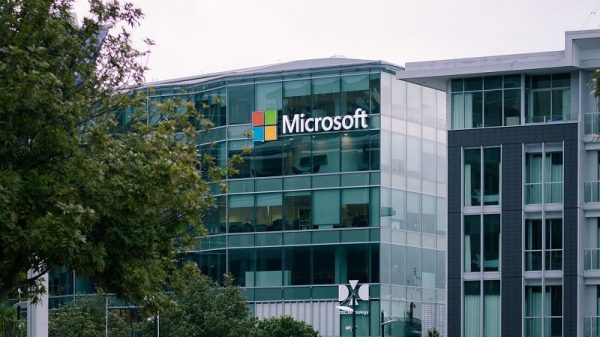The Telecom Regulatory Authority of India (TRAI) has recommended that the reserve price for various bands (800 MHz, 900 MHz, 1800 MHz, 2100 MHz, 2300 MHz, 2500 MHz,3300-3670 MHz) should be set at 70 per cent of the average valuation in the upcoming 5G auction, according to a set of recommendations released recently. The regulatory body also suggested that the reserve price for the Northeast and Jammu & Kashmir should be fixed at a discount of 50 per cent.
For example, the new reserve price for the 800 MHz band is Rs 3,620 crore per MHz on a pan-India basis, a reduction of 22 per cent, as per the revised figures. The 5G frequency of 3300-3670 MHz band carries an all-India reserve price of Rs 317 crore per MHz, which is more than 35 per cent lower than Rs. 492 crore per MHz recommended earlier.
The announcement follows the report by the Parliamentary Standing Committee on Communications and Information Technology which expressed concern over the delay in the launch of 5G services in India. The 5G spectrum auction is set to be held this year as per the Union Budget for 2022-23.
The set of recommendations by TRAI will be significant as it will play a key role in setting up the auctions later this year. They also acknowledge some of the longstanding demands of the telecom industry. It is likely to provide relief to telcos which have been calling for a reduction in base price as they struggle to improve their bottom line.
Key recommendations made by TRAI
Easier terms for payments
TRAI disclosed that the reserve price of spectrum allocation for 30 years should be equal to 1.5 times the reserve price of spectrum allocation for 20 years. Keeping in view of the financial situation of companies, it proposed the following measures for making payments:
- Full or part upfront payment of the bid amount: The buyer, in case of part upfront payments, will have “the option of availing moratorium for the proportionate number of years for which the upfront payment has been made, and the balance amount shall be payable in equal annual installments over the remaining period in advance at the beginning of the year. The annual installments shall become due and payable on the same date of each year after the period of moratorium”.
- Equal installments: TRAI wrote that the companies will have the option to pay 30 equal annual installments of the bid amount in advance at the beginning of the year. “…the first installment becoming payable within 10 days of declaration of final price. The balance 29 installments shall become due and payable on the same date of each following year,” it added.
Development of 5G Use Cases
The Parliamentary Standing Committee had pulled up the DoT for not exploring enough use cases for 5G in its report recently. TRAI has put forth the following measures to push for development of 5G use cases:
“A 5G-dedicated Inter-Ministerial Working Group (IMWG), under the Chairmanship of Member (Technology), DoT should be formed comprising Ministry of Electronics and Information Technology, Department for Promotion of Industry and Internal Trade, Ministry of Information and Broadcasting, Department of Space, Ministry of Finance, Ministry of Education, Department of Science & Technology, Ministry of Micro, Small and Medium Enterprises (MSME) and Niti Ayog as members, which should be represented by JS Level officers,” TRAi said.
The departments have been asked to set up a digital cell with “dedicated technical manpower to formulate the use of digital technologies like 5G, IoT, M2M, AI, etc. and development of relevant and affordable use cases involving start-up companies, entrepreneurs, application providers, etc.”
Push for harmonisation
TRAI has asked the DoT to carry out harmonisation exercises in 800 MHz, 900 MHz, 1800 MHz bands. The exercise has to be carried out after conducting the auction so that frequencies assigned to the TSPs are in a “contiguous manner”. The spectrum harmonisation exercise should be completed within a time frame of not more than 6 months from the date of conclusion of the auction.
Cap on spectrum for telcos
The telecom regulatory body noted that the overall cap is no longer relevant and therefore, should be removed. The spectrum cap is the limit of access spectrum a telecom operator can hold for providing wireless services.
“However, a separate Cap on the combined spectrum holding in 1800 MHz, 2100 MHz, 2300 MHz and 2500 MHz bands be introduced and the spectrum cap for this group of bands be kept as 40%,” TRAI said.
It also suggested
- A cap of 40 per cent on the combined spectrum holding in the 600 MHz, 700 MHz, 800 MHz and 900 MHz bands.
- A (intra-band) cap of 40 per cent for 3300-3670 MHz and 24.25- 28.5 GHz bands of the total spectrum put to auction.
Surrender of spectrum
TRAI has recommended the guidelines for the surrender of spectrum for ease of doing business:
- “DoT should come out with ‘Guidelines for Surrender of Spectrum. The spectrum surrender conditions should be simple and transparent. The process with defined timelines should be clearly specified and be implemented through an online portal-based system.”
- A TSP (Telecom Service Provider) should be permitted to surrender spectrum after a minimum period of ten years from the date of acquisition of spectrum.
- The request for surrender of spectrum should be made at least 12 months prior to the proposed date of surrender.
- DoT should put to auction the surrendered spectrum immediately, once the final approval to surrender of spectrum (upon clearance of dues up to the proposed date of surrender) is issued.
- A TSP will be barred from taking part in the auction of spectrum in that band for a period of two years from date of surrender of spectrum.
- DoT may examine the possibility for creation of provision for surrender of spectrum for the existing spectrum holding of the TSPs acquired through past auctions.
- Surrender fees should not be kept high to make the provision ineffective. It may be kept as Rs. 1,00,000 per spectrum band per Licensed Service Area.
Request by satellite players go unheeded
The regulatory body did not heed calls by satellite companies for administrative allocation in the 27.5-28.5 GHz frequency band and called for the following: “…in 600 MHz (APT 600 Option B1), 700 MHz, 800 MHz, 900 MHz, 1800 MHz, 2100 MHz, 2300 MHz, 2500 MHz, 3300-3670 MHz and 24.25-28.5 GHz spectrum bands, the entire available spectrum should be put to auction in the forthcoming auction.”
TRAI advocated the following: “As mmWave spectrum is going to be used for capacity requirement, its deployment is not likely to be ubiquitous rather it is more likely to be kind of hotspots or urban micro cells. Therefore, IMT Stations and Satellite Earth Stations Gateway (Earth to Space) can co-exist in 27.5-28.5 GHz frequency range. The Satellite Earth Station Gateway should be permitted to be established in frequency range 27.5-28.5 GHz at uninhabited or remote locations on case-to-case basis, where there is less likelihood of 5G IMT services to come up.”
It went on to add: “DoT (Department of Telecommunications) should prescribe the exclusion zone requirement for co- existence of IMT and satellite earth stations (Earth to space) in 27.5-28.5 GHz frequency range.”
Why was COAI disappointed with TRAI’s recommendations?
“COAI is disappointed by TRAI’s recommendations for auction of 5G spectrum bands. These recommendations are one step backwards than forward towards building a Digitally Connected India,” Lt. Gen. Dr SP Kochhar, Director General, COAI, said in a statement to MediaNama.
Here are some of the objections by COAI:
Spectrum pricing too high: “The spectrum pricing recommended by TRAI is too high. Throughout the consultation process, industry had presented extensive arguments based on global research and benchmarks, for significant reduction in spectrum prices. Industry recommended 90% lower price, and to see only about 35-40% reduction recommended in prices, therefore is deeply disappointing,” Kochhar said.
Price for spectrum allocation of 30 years defies logic: “The TRAI has decided to recommend reserve prices for 20 years and applied 1.5 times multiple to the price if spectrum is to be taken for 30 years. This defies logic and calls for lower spectrum prices by the industry and intelligentsia to keep spectrum prices lower to enable the industry in aggressive network rollouts that will require massive investments,” Kocchar explained, urging TRAI to reconsider the aforementioned recommendations.
This post is released under a CC-BY-SA 4.0 license. Please feel free to republish on your site, with attribution and a link. Adaptation and rewriting, though allowed, should be true to the original.
Also read:































